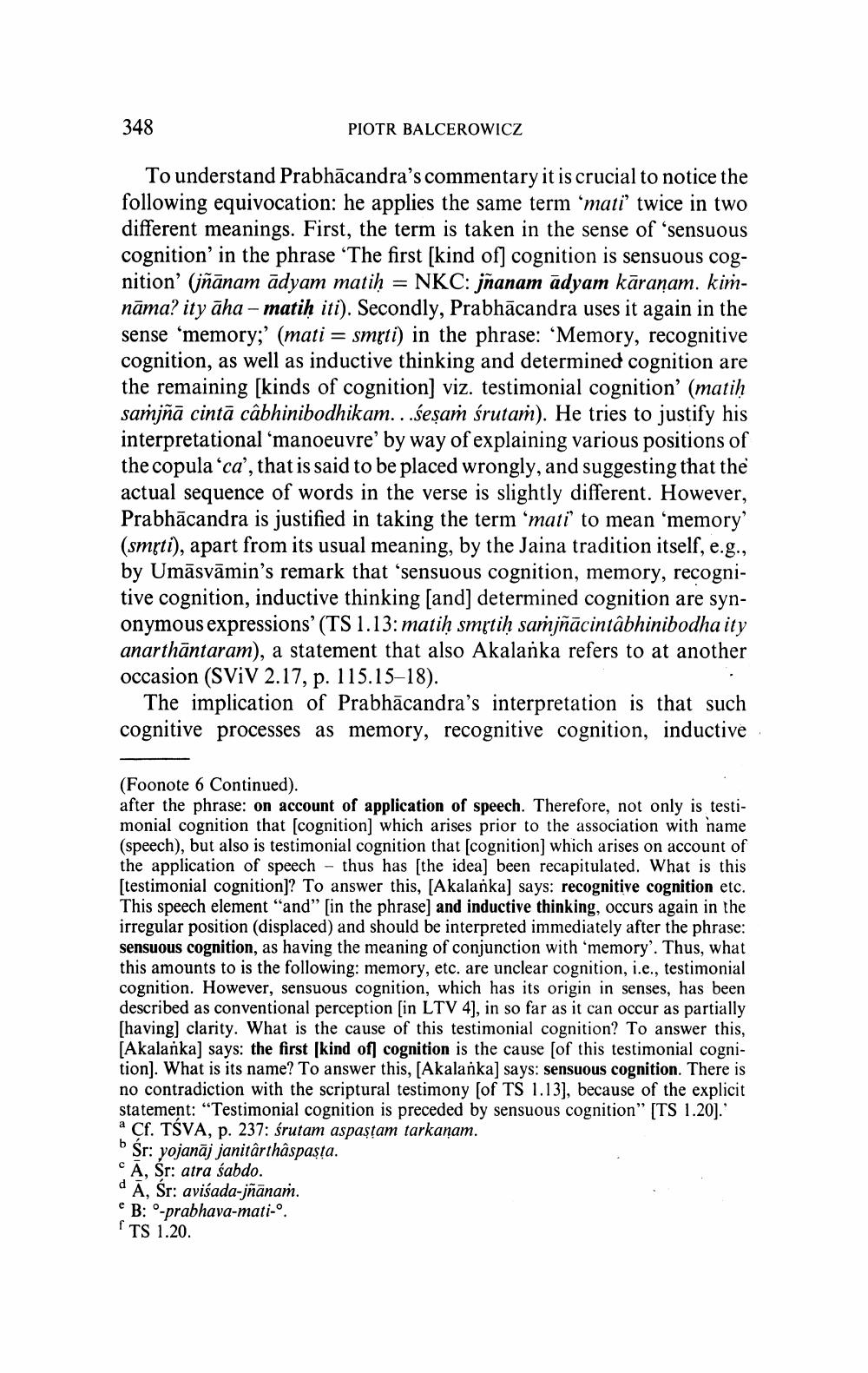Book Title: Pramanas And Language Dispute Between Dinnaga Dharmakirti And Akalanka Author(s): Piotr Balcerowicz Publisher: Piotr Balcerowicz View full book textPage 6
________________ 348 PIOTR BALCEROWICZ To understand Prabhācandra's commentary it is crucial to notice the following equivocation: he applies the same term 'mati' twice in two different meanings. First, the term is taken in the sense of 'sensuous cognition' in the phrase 'The first [kind of] cognition is sensuous cognition' (jñānam ādyam matiḥ = NKC: jnanam ādyam kāranam. kimnāma? ity āha – matiḥ iti). Secondly, Prabhācandra uses it again in the sense 'memory;' (mati = smrti) in the phrase: “Memory, recognitive cognition, as well as inductive thinking and determined cognition are the remaining skinds of cognition) viz. testimonial cognition' (matih samjñā cintā câbhinibodhikam...seșaṁ śrutam). He tries to justify his interpretational ‘manoeuvre' by way of explaining various positions of the copula 'ca', that is said to be placed wrongly, and suggesting that the actual sequence of words in the verse is slightly different. However, Prabhācandra is justified in taking the term 'mati' to mean 'memory (smrti), apart from its usual meaning, by the Jaina tradition itself, e.g., by Umāsvāmin's remark that 'sensuous cognition, memory, recognitive cognition, inductive thinking [and] determined cognition are synonymous expressions' (TS 1.13: matiḥ smrtih samjñācintâbhinibodha ity anarthāntaram), a statement that also Akalanka refers to at another occasion (SViV 2.17, p. 115.15-18). The implication of Prabhācandra's interpretation is that such cognitive processes as memory, recognitive cognition, inductive (Foonote 6 Continued). after the phrase: on account of application of speech. Therefore, not only is testimonial cognition that (cognition) which arises prior to the association with name (speech), but also is testimonial cognition that (cognition) which arises on account of the application of speech - thus has [the idea] been recapitulated. What is this [testimonial cognition)? To answer this, (Akalanka] says: recognitive cognition etc. This speech element "and" [in the phrase) and inductive thinking, occurs again in the irregular position (displaced) and should be interpreted immediately after the phrase: sensuous cognition, as having the meaning of conjunction with memory'. Thus, what this amounts to is the following: memory, etc. are unclear cognition, i.e., testimonial cognition. However, sensuous cognition, which has its origin in senses, has been described as conventional perception (in LTV 4), in so far as it can occur as partially [having] clarity. What is the cause of this testimonial cognition? To answer this, [Akalanka] says: the first [kind of] cognition is the cause (of this testimonial cognition). What is its name? To answer this, (Akalanka] says: sensuous cognition. There is no contradiction with the scriptural testimony [of TS 1.13), because of the explicit statement: “Testimonial cognition is preceded by sensuous cognition" [TS 1.20).' a Cf. TÁVA, p. 237: śrutam aspastam tarkanam. Sr: yojanāj janitârthâspasta. CA, Śr: atra śabdo. A, Śr: avisada-jñānam. B: -prabhava-mati-o. FTS 1.20.Page Navigation
1 ... 4 5 6 7 8 9 10 11 12 13 14 15 16 17 18 19 20 21 22 23 24 25 26 27 28 29 30 31 32 33 34 35 36 37 38 39 40 41 42 43 44 45 46 47 48 49 50 51 52 53 54 55 56 57 58
